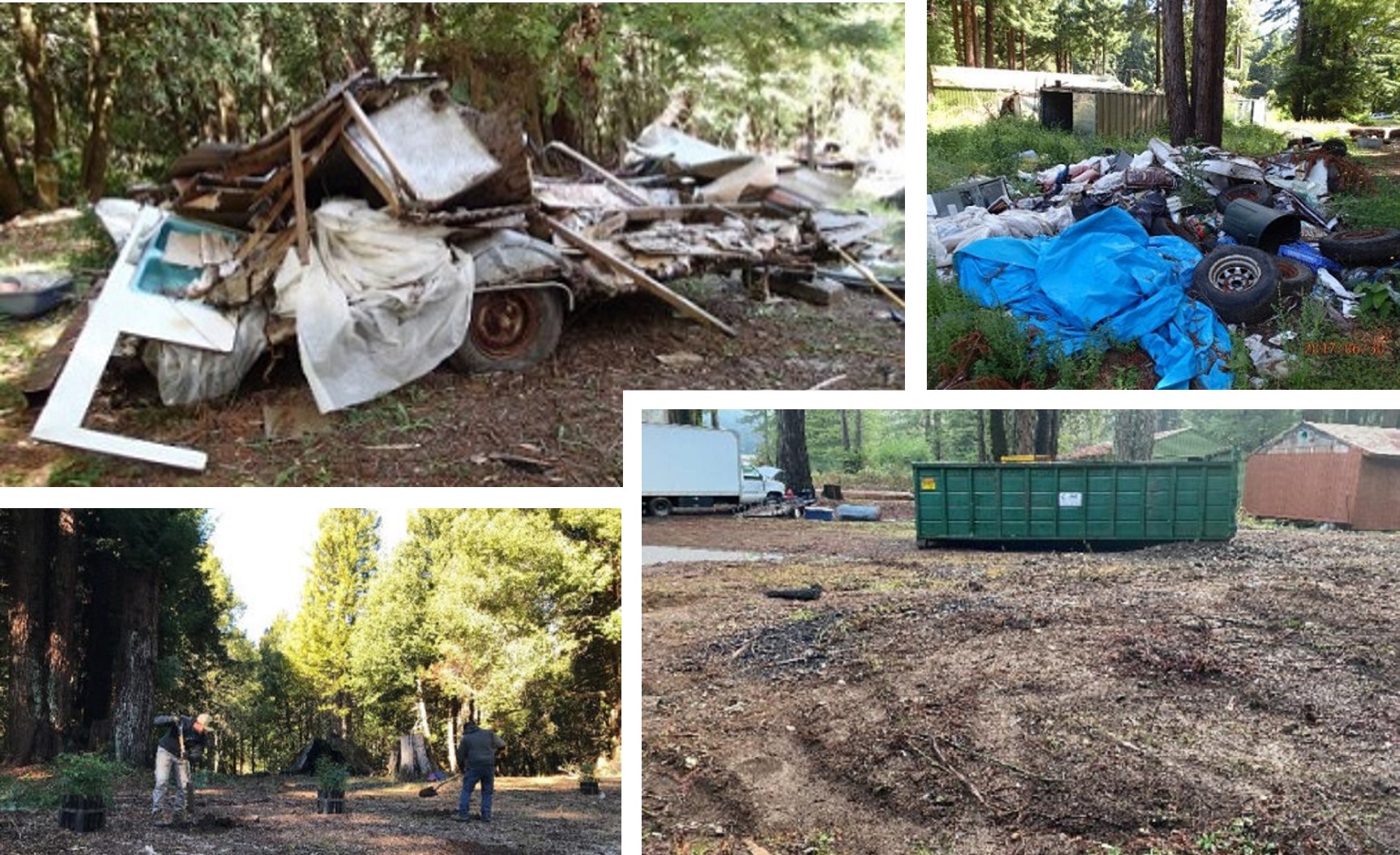Project Goals
The project addressed impacts to Sanctuary Forest’s property as a result of a trespass cannabis cultivation site that occurred from approximately 2014 to 2016. Impacts to the property included clearing of approximately 0.5 acre of forest as well as additional tree topping and extensive dumping of garbage (approximately 160,000 pounds) along the riparian zone of the upper Mattole River. Every winter, heavy rainfall combined with a high water table resulted in pooling of water on the site, causing leaching from the piles of garbage, used soil, fertilizers, car batteries, etc. The hazardous waste was mobilized during these events and discharged off site directly into the adjacent Mattole River, negatively affecting downstream fish and wildlife, and drinking water supplies. This project facilitated the thorough and efficient garbage cleanup, proper disposal of hazardous materials, and re-vegetation of the cleared area to restore past redwood forest conditions.
Project Accomplishments and Ecosystem Outcomes
Pre-project estimates included approximately 50,000 pounds of solid waste, 5-10,000 pounds of potentially hazardous waste (potting soil, car batteries, used tires), and ~100,000lbs of scrap metal. Post-project, approximately 50,000 pounds of total garbage and hazardous waste were removed from the property. Due to a change in ownership on the neighboring property, not all of the garbage that was originally planned for removal was possible. An illegal road was decommissioned and scotch broom was pulled to prep the site for the planting of 160 redwood trees. In total, approximately 378 feet of riparian habitat was reclaimed.
 Trash piles at an illegal grow near the Mattole River (top left and right), garbage and refuse organized for disposal (bottom right), and replanting efforts of 160 Sequoia sempervirens (bottom left). Photos courtesy of the Watershed Restoration Grant Program and Sanctuary Forest.
Trash piles at an illegal grow near the Mattole River (top left and right), garbage and refuse organized for disposal (bottom right), and replanting efforts of 160 Sequoia sempervirens (bottom left). Photos courtesy of the Watershed Restoration Grant Program and Sanctuary Forest.